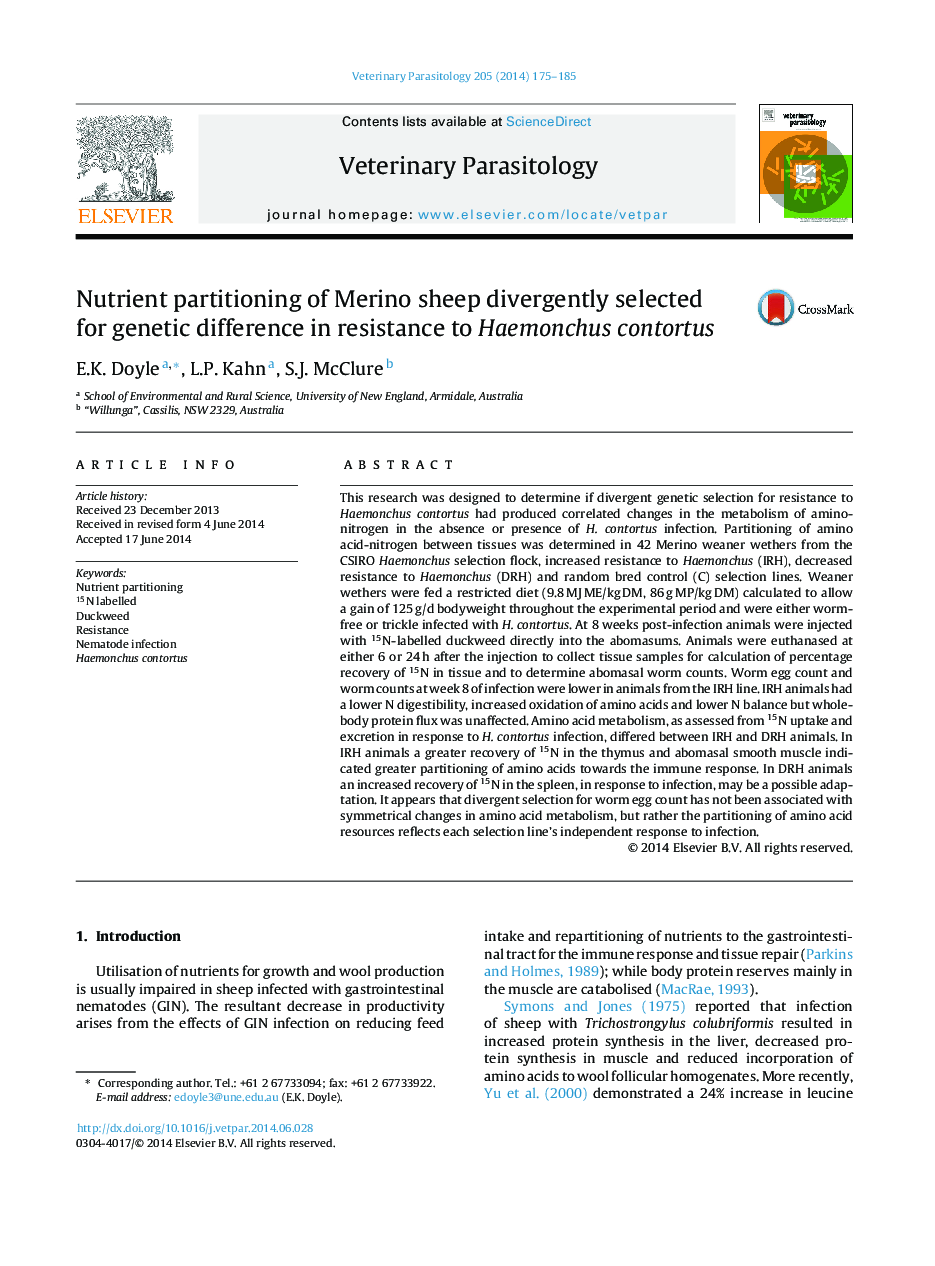| Article ID | Journal | Published Year | Pages | File Type |
|---|---|---|---|---|
| 5803194 | Veterinary Parasitology | 2014 | 11 Pages |
This research was designed to determine if divergent genetic selection for resistance to Haemonchus contortus had produced correlated changes in the metabolism of amino-nitrogen in the absence or presence of H. contortus infection. Partitioning of amino acid-nitrogen between tissues was determined in 42 Merino weaner wethers from the CSIRO Haemonchus selection flock, increased resistance to Haemonchus (IRH), decreased resistance to Haemonchus (DRH) and random bred control (C) selection lines. Weaner wethers were fed a restricted diet (9.8 MJ ME/kg DM, 86 g MP/kg DM) calculated to allow a gain of 125 g/d bodyweight throughout the experimental period and were either worm-free or trickle infected with H. contortus. At 8 weeks post-infection animals were injected with 15N-labelled duckweed directly into the abomasums. Animals were euthanased at either 6 or 24 h after the injection to collect tissue samples for calculation of percentage recovery of 15N in tissue and to determine abomasal worm counts. Worm egg count and worm counts at week 8 of infection were lower in animals from the IRH line. IRH animals had a lower N digestibility, increased oxidation of amino acids and lower N balance but whole-body protein flux was unaffected. Amino acid metabolism, as assessed from 15N uptake and excretion in response to H. contortus infection, differed between IRH and DRH animals. In IRH animals a greater recovery of 15N in the thymus and abomasal smooth muscle indicated greater partitioning of amino acids towards the immune response. In DRH animals an increased recovery of 15N in the spleen, in response to infection, may be a possible adaptation. It appears that divergent selection for worm egg count has not been associated with symmetrical changes in amino acid metabolism, but rather the partitioning of amino acid resources reflects each selection line's independent response to infection.
